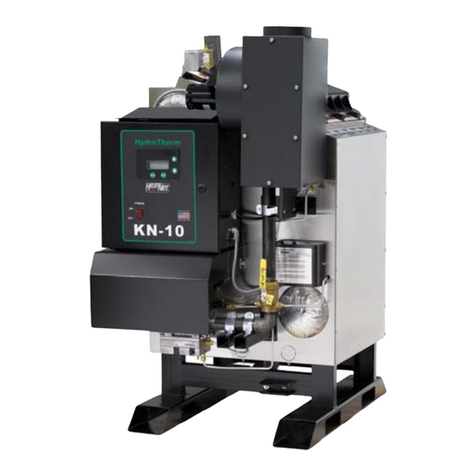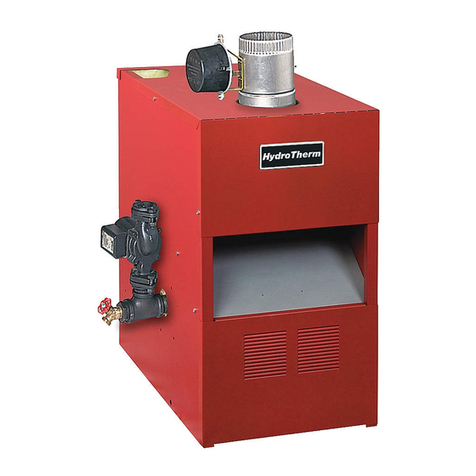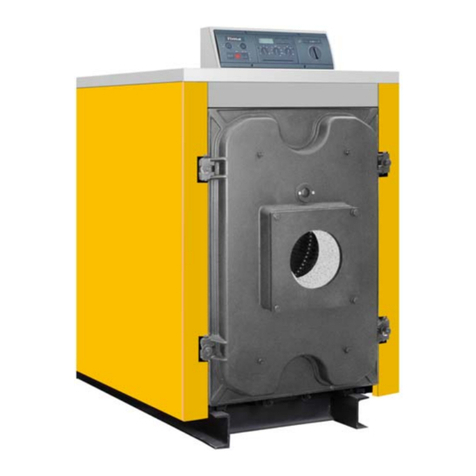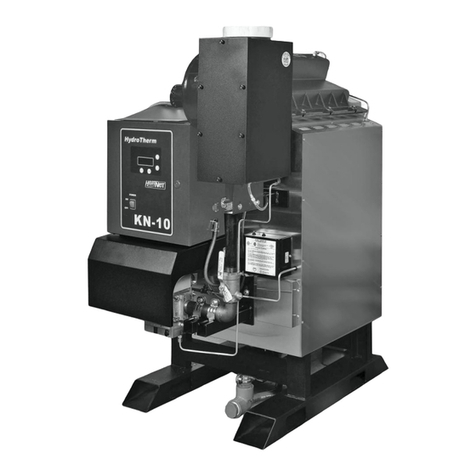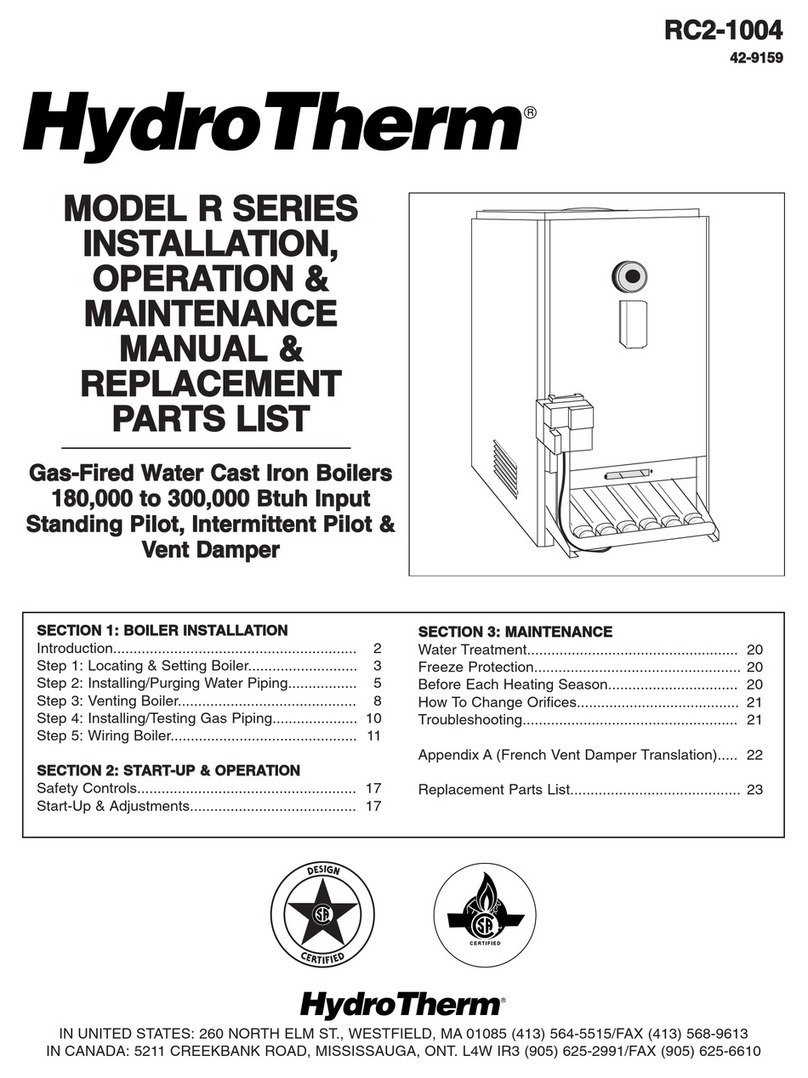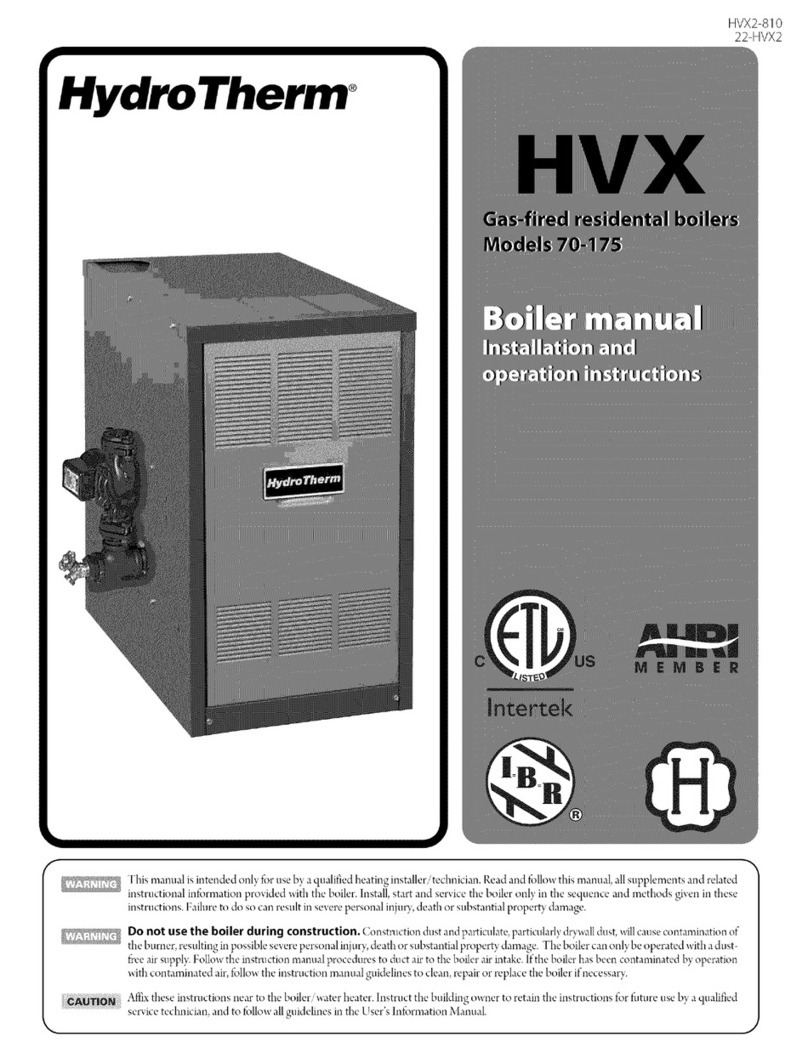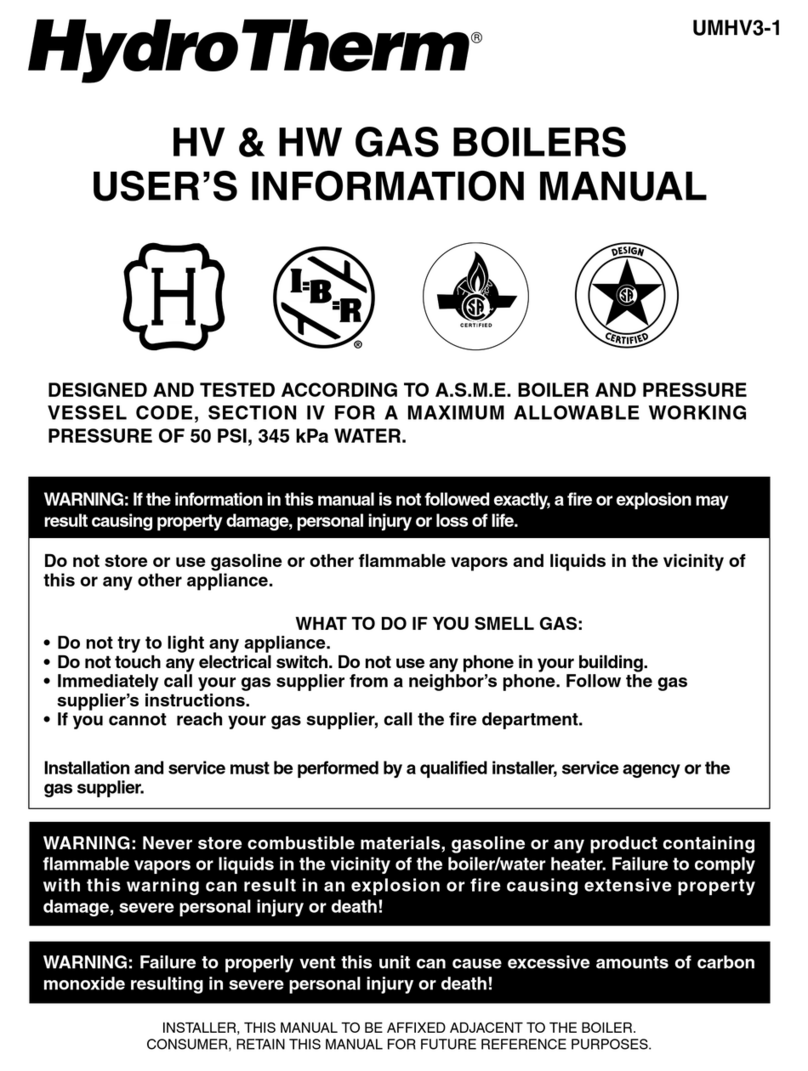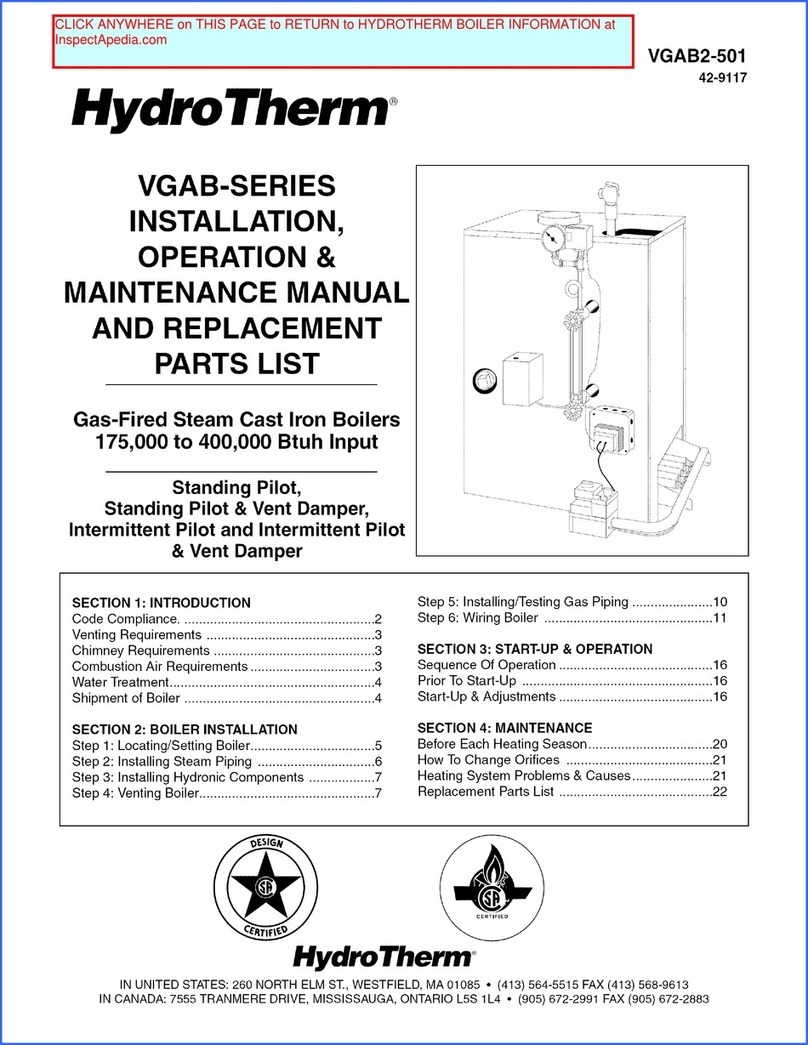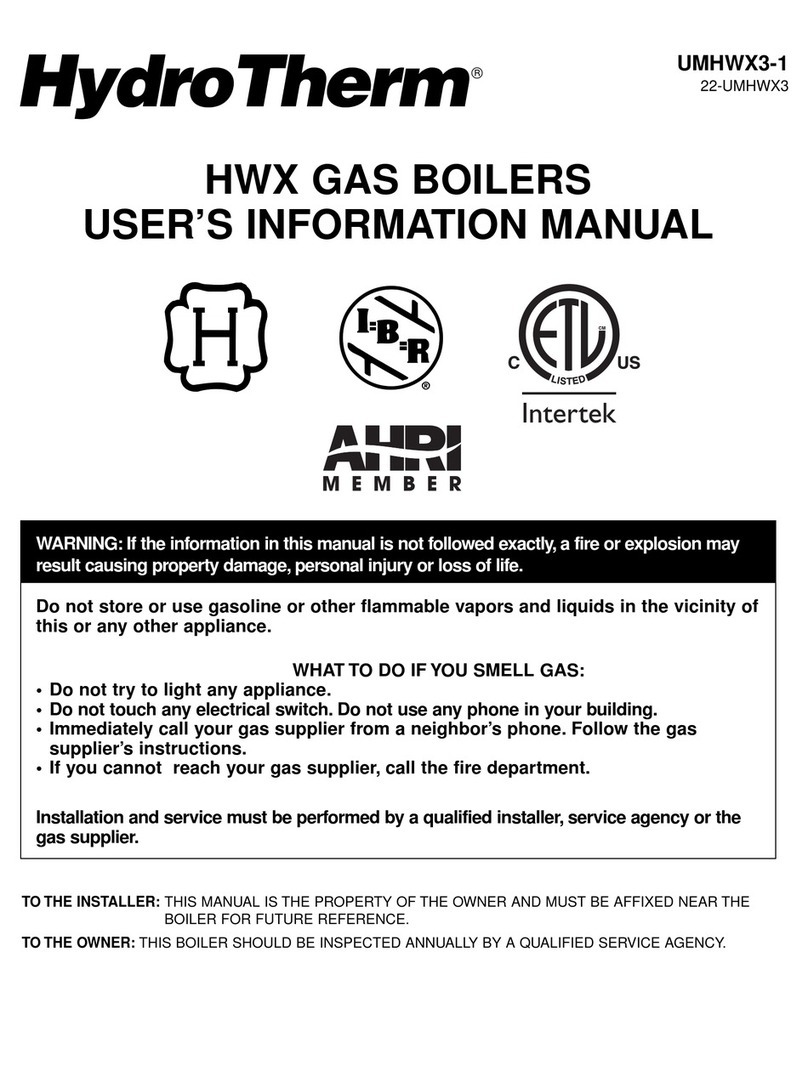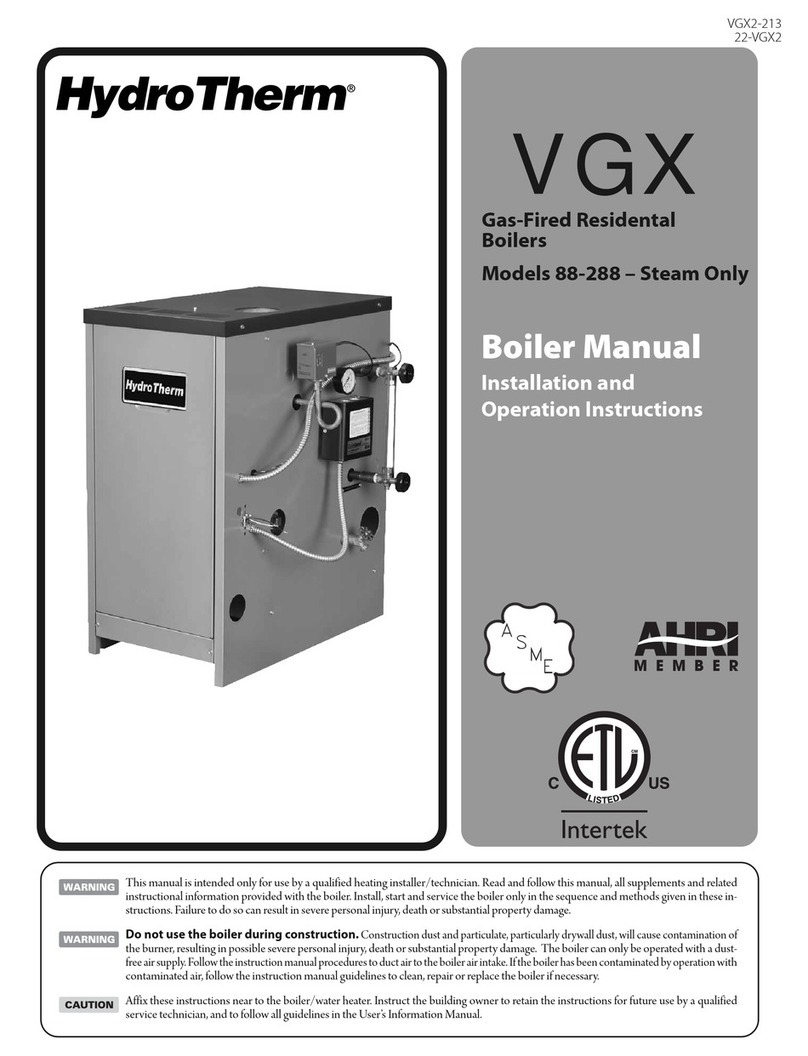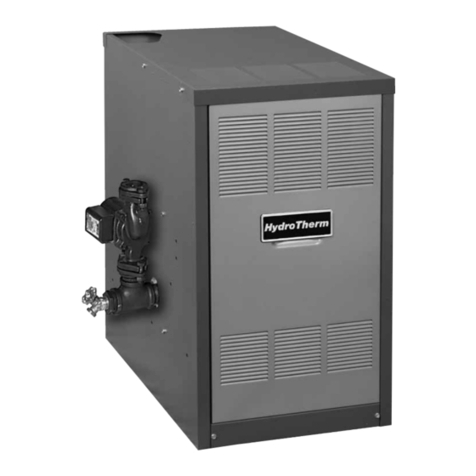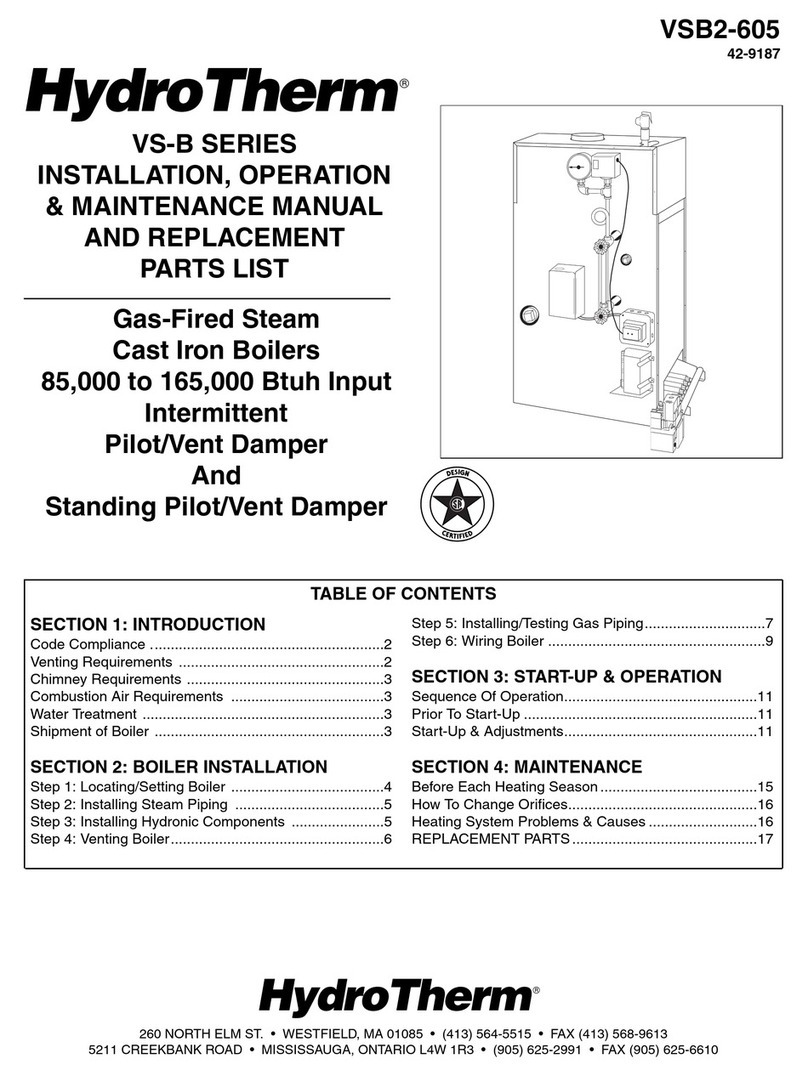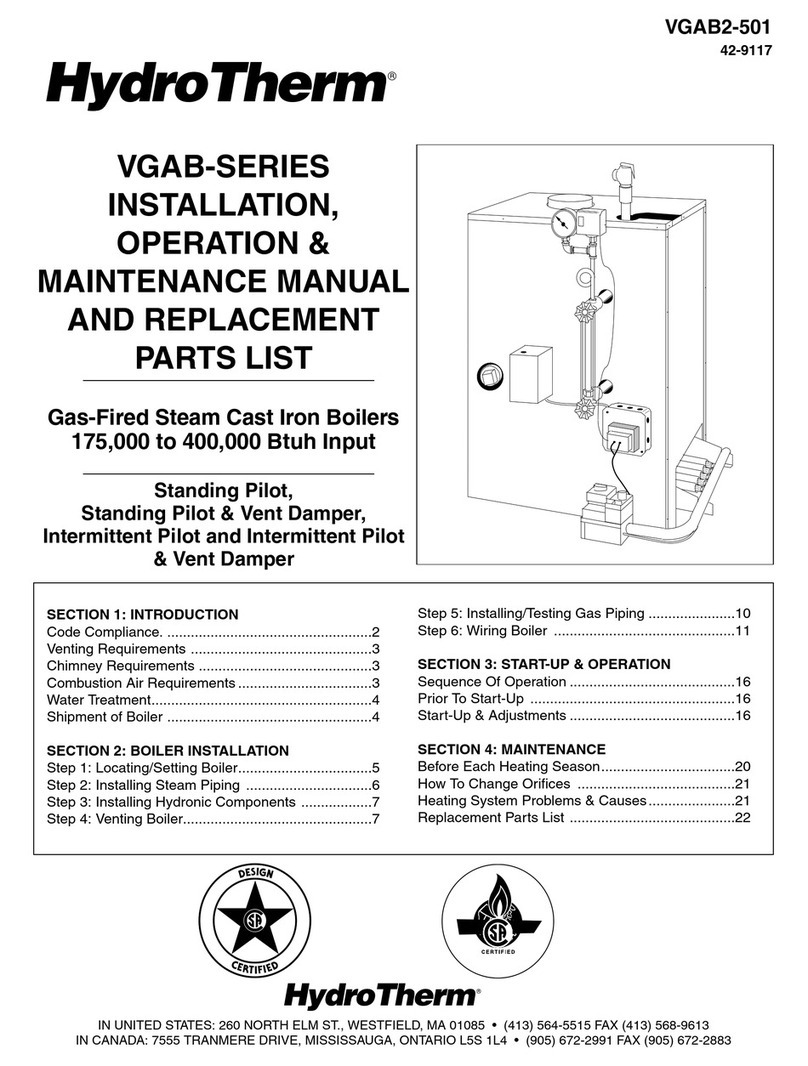
PAGE 7
6. Clean Heating Surfaces: Each side cleanout cover must
be removed for access to flue during cleaning. The burner
mounting plate allows full access to the combustion chamber
when removed. Cleanout covers for the individual flue
passages are located on the left hand side of the boiler and
are uncovered by removing the left hand side access jacket
panel. Use a wire brush to clean the surfaces and vacuum
the soot and scale out of the base of the boiler.
NOTE: The best cleaning method is brushing, starting at
the top and working down. Be sure to treat all fireside
surfaces.
WATER
1. Water Pressure: The boiler water pressure must be
sufficient to maintain a full system and to prevent boiling of
the system water. An initial fill pressure of 12 psi provides
for 18-1/2 feet of system height. Each additional 2.3 feet of
height requires an additional one pound pressure. Be sure
no air is trapped in the boiler, system piping or heating units
to impede circulation of the heated boiler water.
2. Low Water Cutoff: Check the cutoff switch to be certain
the switch opens on water level drop below cutoff point.
3. Temperature Controls: Check regularly to be sure the
controls are functioning to prevent excessive high boiler
water temperature.
4. Relief Valves: Conduct regular visual inspection of relief
valves to detect signs of corrosive deposits, rust buildup or
signs of weeping. If there are signs of deposits around the
disc and seat of the valve, replace the valve with a new valve
of proper capacity and pressure setting.
5. Clean Heating Surfaces: Each side cleanout cover must
be removed for access to flue during cleaning. The burner
mounting plate allows full access to the combustion chamber
when removed. Cleanout covers for the individual flue
passages are located on the left hand side of the boiler and
are uncovered by removing the left hand side access jacket
panel. Use a wire brush to clean the surfaces and vacuum
the soot and scale out of the base of the boiler.
NOTE: The best cleaning method is brushing starting at
the top and working down. Be sure to treat all fireside
surfaces.
CHIMNEY AND SMOKE PIPE
Be sure that the chimney and smoke pipe do not become
obstructed by birds nests, squirrels, soot, chimney liner
deterioration, or other happenings. Keep chimney cleanout
doors closed and seal tight around the frames. Be sure the
smoke pipe is inserted only at the nearest chimney liner
surface and seal around the pipe with insulating cement.
COMBUSTIBLES
Be sure that no combustible materials are stored close to the
boiler or smoke pipe. Fires can cause personal injury and
property damage.
20. STEAM BOILER CABLE INSTALLATION
Refer to Figure No. 10 when installing wiring cable on PB
Series Steam Boilers.
18. FILLING THE SYSTEM
WATER
Fill the system slowly, venting and checking for leaks. Do not
operate the circulator until the system is full.
When the relief valve is set to operate at 30 psi, the initial fill
pressure should be sufficient to fill the system to the high
point and develop a pressure at that point so as to prevent the
water in the system from boiling at the maximum operating
temperature. Under normal conditions, a static height of
18 1/2 feet will require an initial fill pressure of 12 psi.
STEAM
Stable water level is a necessity for steam boilers. It is very
important to have boiler water free from oil, grease, foaming
materials etc. Therefore, flush the boiler thoroughly through
a bottom drain by introducing clean water into the upper ports
of all sections of the boiler. After the boiler piping connections
are completed and the boiler can be fired, the boiler water
should be heated up and surface impurities flushed off
through a high connection and then drained through a bottom
opening. The burner should not be operated with low water
level in the boiler and makeup water should not be introduced
into a hot boiler.
If possible, the heating boiler should be operated for a time
with all condensate returning from the system being wasted
to a drain. This will remove impurities from the piping system
which, if not removed early, will eventually enter the boiler
and cause problems. In some instances, more than one
cleaning will be required to obtain stable water line.
19. BOILER MAINTENANCE
IMPORTANT - These suggestions cover the boiler
maintenance work which will result in the most
efficient operation, the longest useful life of the
boiler and the highest return on any investment
necessary to carry out the maintenance work.
STEAM
1. Water Level: Check regularly to be sure the boiler water
level stays at the marked water line during operation under
steam pressure. DO NOT ADD WATER TO A HOT BOILER.
If water level is not visible in the gauge glass, allow the boiler
to cool before adding makeup water. Locate the cause of low
water and correct before starting operation.
2. Low Water Cutoff: Check the burner cutoff switch to be
certain the switch opens on water level drop below cutoff
level.
3. Pressure Controls: Check regularly to be certain the
pressure limit controls are functioning.
4. Safety Valves: Conduct regular visual inspection of
safety valve to detect signs of corrosive deposits, rust build-
up or signs of weeping. If there are signs of deposits around
the disc and the seat of the valve, replace the valve with a
new valve of proper capacity and pressure setting.
5. Gauge Glass: When rust, suspended solids, etc. appear
in the gauge glass, blowdown may be necessary. Blowdown
should be limited only as necessary to remove sediment
from the boiler waterways. Foaming, fluctuating water line,
steam hammer are signs pointing to the need for blowdown.
